Issue #128: Blurring Lines in the Kitchen
Ontological Questions about Latkes and Donuts, Maybe the Fat's the Thing, Recipe for a Delicious Apple Cake
Although I generally leave ontological debates about food to the professionals—such as Italian philosopher Andrea Borghini, who has written extensively on the ontology of recipes and whose interview on my What’s Burning podcast you can listen to here—there are a few categories of dishes I believe are defined by core elements that cannot be ignored. For example, as the holidays approach, I think back to the 1980s, when a fear of fat, especially among Jewish homemakers, led to the popularity of baked latkes. Latkes, as you may know, are potato pancakes consumed primarily around Hannukah, the Jewish festival of lights. Fried in oil, they are meant to be symbolic of the oil found after the restoration of the second Temple in Jerusalem, barely enough to light a lamp for only one day that miraculously burned for eight.
So, the idea of a latke that is not fried in oil, but rather made fat-free and baked in a muffin tin, as prescribed by some fat-fearing nogoodnik in a test kitchen someplace in the 1970s, is antithetical to the latke itself. A miniature, round, flat potato kugel does not a latke make. (Hannukah begins this year on December 7. For my award-winning recipe for oil-fried latkes, see Issue #27.)
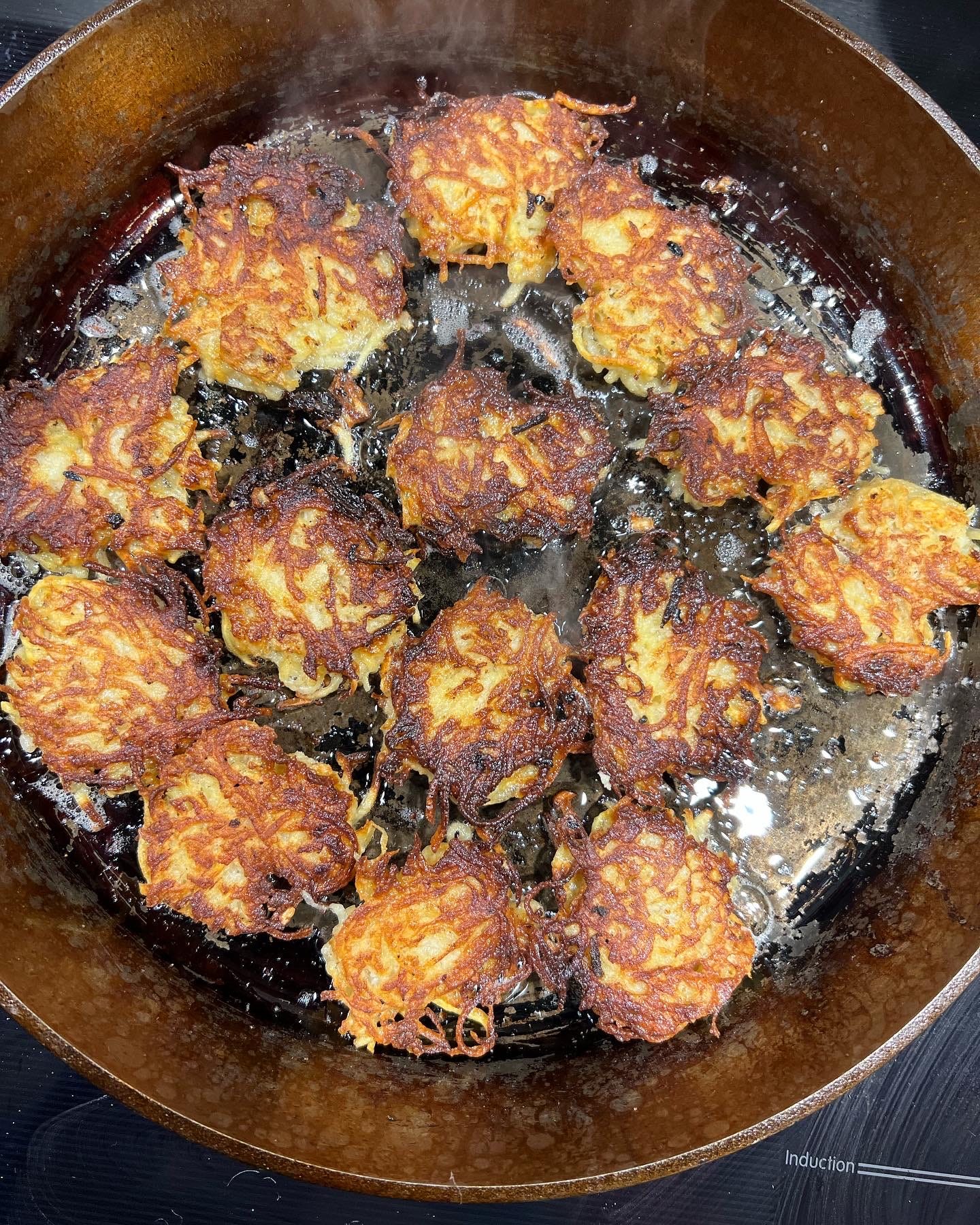
Similarly, I question whether a donut (aka doughnut) that is not fried in oil can be considered a donut at all. (Perhaps there is something about frying in oil that gets to the essence of culinary character?) And yet recipes abound for baked donuts that never take a dip in the fryer. My Instagram feed is full of them, including a very popular one from the New York Times. There are even muffins and cakes that claim to be “just like donuts.”
Interestingly, the type of ersatz donut most simulated in this way is the cider donut, which as far as I can tell, has little to do with the taste of apples or cider, and instead proffers a combination of cinnamon and nutmeg and a dusting of sugar. It stands to reason that anything with the same flavor and texture profile could try to pass as a “donut.” However, just as pumpkin spice imparts nothing of the flavor of the squash that lies beneath it, cider donut spice does not a cider donut make. (Do I sense cider donut spice lattes on the horizon?)
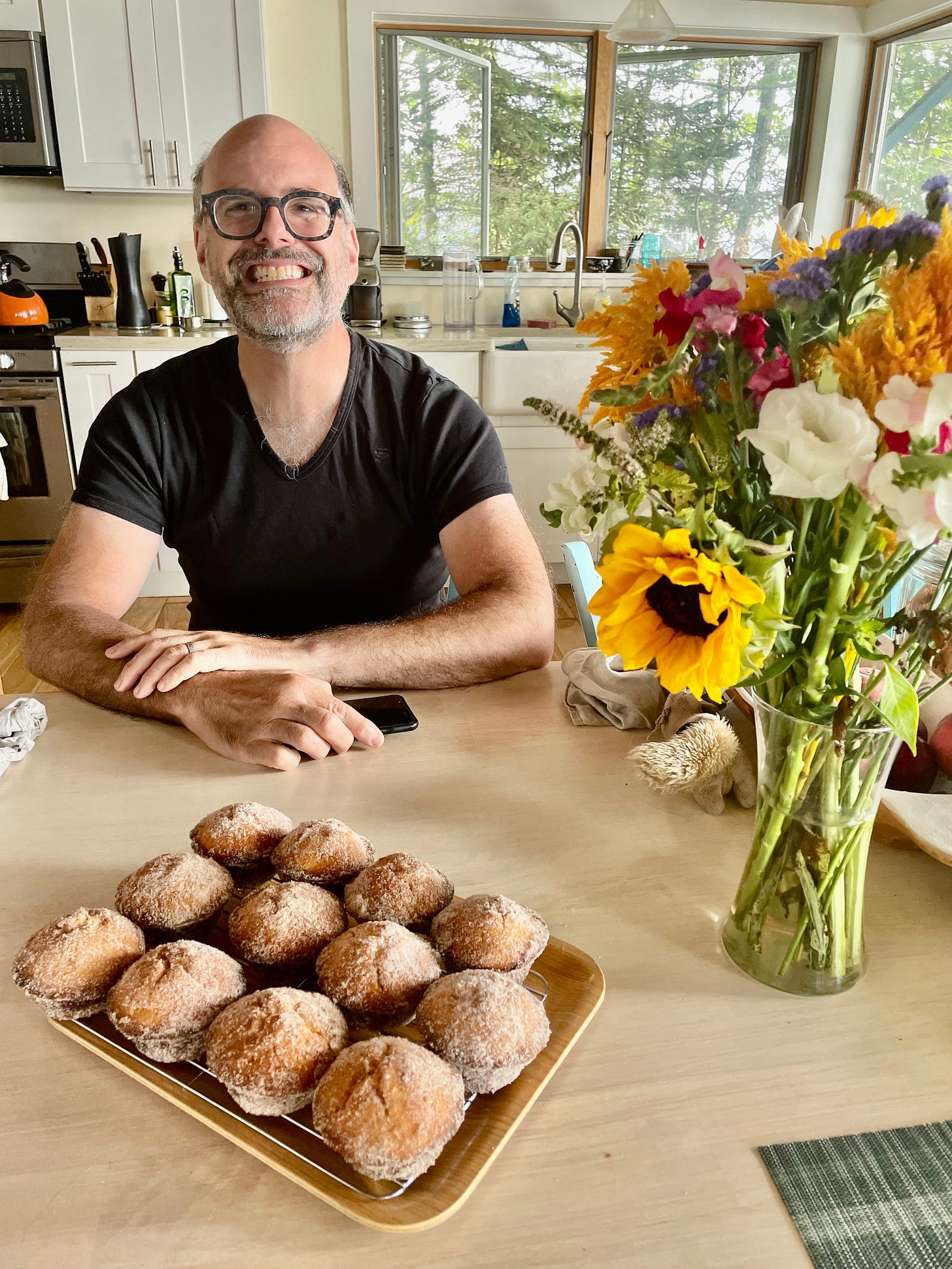
I love donuts. I don’t love the wastefulness of deep frying. So, I admit that I’m often suckered into trying these baked bastardizations, even though I know I am bound to be disappointed. My Instagram feed must know I love them, too. They keep acoming.
One of my favorite types of donut is an apple fritter, those dense, bready chunks of dough studded with soft apples and cinnamon swirls that are dipped in a sugary glaze. If I see one, or better, smell one, it’s hard for me to resist. One of the best apple fritters I have enjoyed of late came unexpectedly from a coffee shop in Ithaca, New York. You’ve heard me talk about Ithaca, outside of which is where the lakehouse we are renting is located. One day we happened into the Hound and Mare coffee shop, under new management at the time, and saw homemade apple fritters on offer.
I say unexpectedly because, for the most part, apple fritters are such a production to make that they are rarely produced outside of donut shops. But this was a beauty. Rich, dense, gooey, sweet, cinnamony. And it was delicious. I think about it often.
So, when my Instagram feed started to show me videos of luscious “apple fritter” cakes, I took notice.
And earlier this week, I finally made one. Here’s the thing. Like many recipes on the internet, the idea was good, but the recipe kind of sucked. For starters, it was obviously from England, calling for self-rising flour and such. Second, none of the ingredients were listed in any discernible order. Third, though it wasn’t written this way, the baker advised you to make it all vegan, with soy milk and soy yogurt, which I could understand if you were vegan, but not for health reasons—with all the sugar in this recipe, good luck making it “healthier.” Fourth, I thought it needed some egg. Fifth, several things didn’t react exactly as the recipe said they would.
So, I adapted, rewrote, and tested the recipe to make it easier to follow. It is, in fact, nothing like an apple fritter, but it is a delicious apple cake. Perhaps the only thing it has in common with the former is an excessive amount of cinnamon, just on this side of too much, and sugar. Do yourself a favor and use a fresh, high-quality cinnamon, such as one of these from Burlap & Barrel. Think of this as a sweet, gooey, cinnamony apple cake, which is what I’m going to call it, and you won’t be disappointed. I am having a hard time not eating the whole thing.
RECIPE: Sweet, Gooey, Cinnamony Apple Cake
(Makes a substantial 8-inch square cake, 9 to 12 servings)
For the apples
2 large apples, peeled, cored, and diced (I prefer Northern Spy, but any flavorful cooking apple that holds its shape will do)
1/4 cup (60g) granulated sugar
1 teaspoon cinnamon
2 tablespoons cornstarch
1 tablespoon apple cider or water
For the cake
1 3/4 cups (360ml) whole milk
1 teaspoon cider vinegar
3 cups all-purpose flour
4 teaspoons baking powder
1 teaspoon baking soda
1 teaspoon fine sea salt
2 teaspoons ground cinnamon, divided
1 egg
1/2 cup (100g) sour cream or plain greek yogurt
1/2 cup (100g) extra-virgin olive oil
1 teaspoon vanilla
1 cup (200g) light brown sugar
1/3 cup (80g) dark brown sugar
For the glaze
1 3/4 cups (200g) icing sugar
1/4 cup (60g) whole milk
1 teaspoon vanilla
To prepare the apples, in a medium saucepan, combine the diced apple, sugar, and cinnamon, and set over medium heat to cook until the apples soften and give off some juice, just 5 or 6 minutes. Meanwhile, in a small cup or bowl, make a slurry by combining the cornstarch and apple cider or water, and add to the apples to thicken. Cook a couple of minutes more until gooey. Set aside to cool.
Preheat the oven to 350°F. Grease an 8-inch square baking pan, line with parchment, and grease again. In a large bowl, combine the milk with the vinegar and set aside for 10 minutes to curdle. In a medium bowl, combine the flour, baking powder, baking soda, salt, and 1 teaspoon of the cinnamon, and whisk to blend. Set aside.
Once the milk is set, whisk in the egg, sour cream or yogurt, olive oil, and vanilla until blended. Whisk in the cup of light brown sugar to dissolve and stir in the dry ingredients to make a thick batter. Don’t over mix. Spread half of this batter evenly in the bottom of the prepared pan. Spoon the apple mixture on top and, using a small offset spatula, spread the apples to distribute evenly. Sprinkle the apples evenly with all but a couple of tablespoons of the dark brown sugar and the remaining teaspoon of cinnamon.
Top with the remaining batter and spread to even out. Sprinkle with the reserved couple of tablespoons of dark brown sugar. Bake for 55 minutes to an hour, until the cake has risen, browned and set rather firmly. Remove from the oven and let cool on a wire rack for 10 minutes.
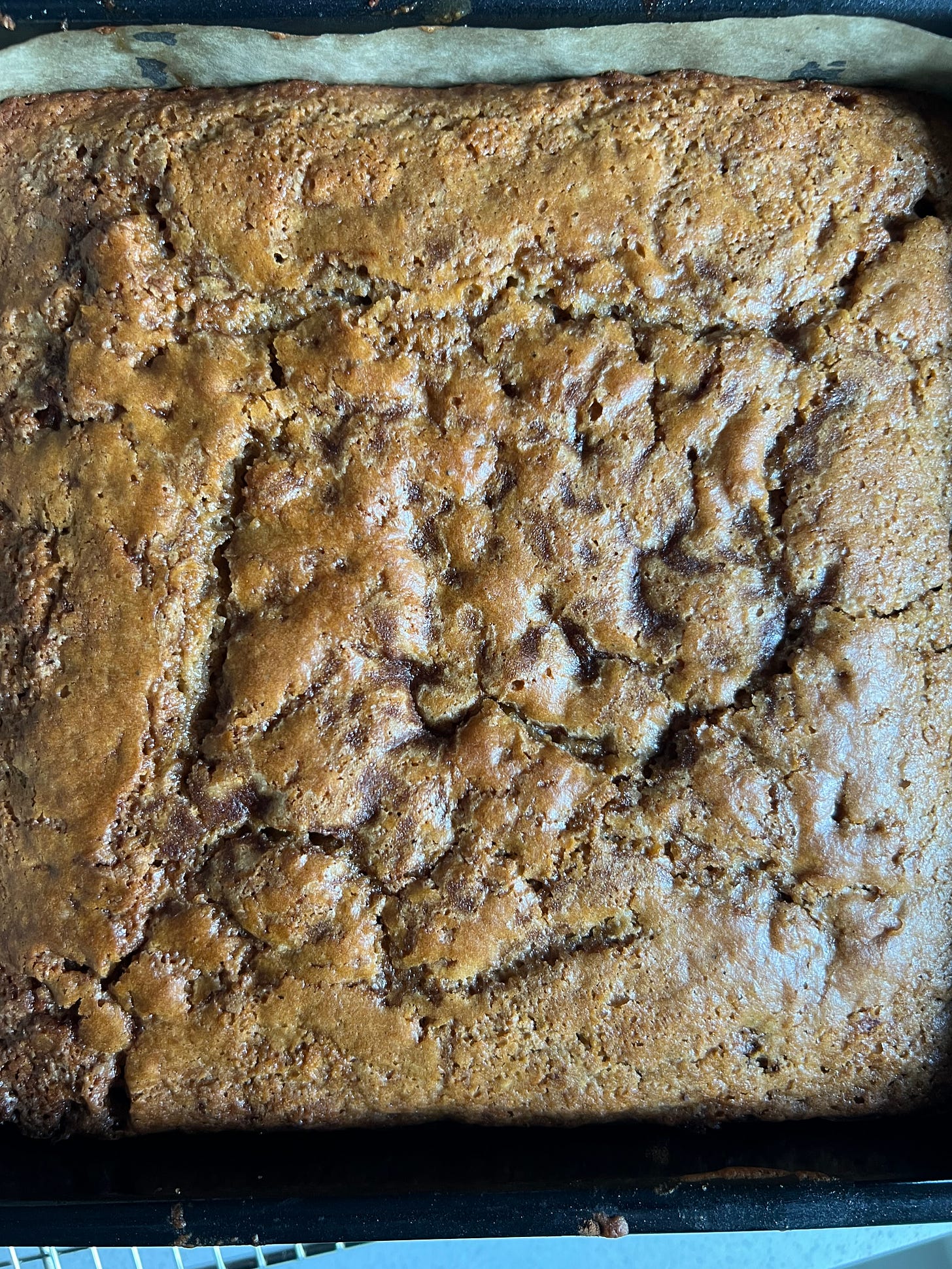
While the cake is cooling, prepare the glaze. In a medium bowl, combine the icing sugar, milk, and vanilla to make a smooth, pourable glaze. Once the cake has cooled slightly but is still warm, use a chopstick to poke a few holes evenly around the cake and pour over the glaze. Spread to distribute and make some of the glaze fall into the holes. Allow the cake to cool completely to room temperature before removing from the pan to serve.


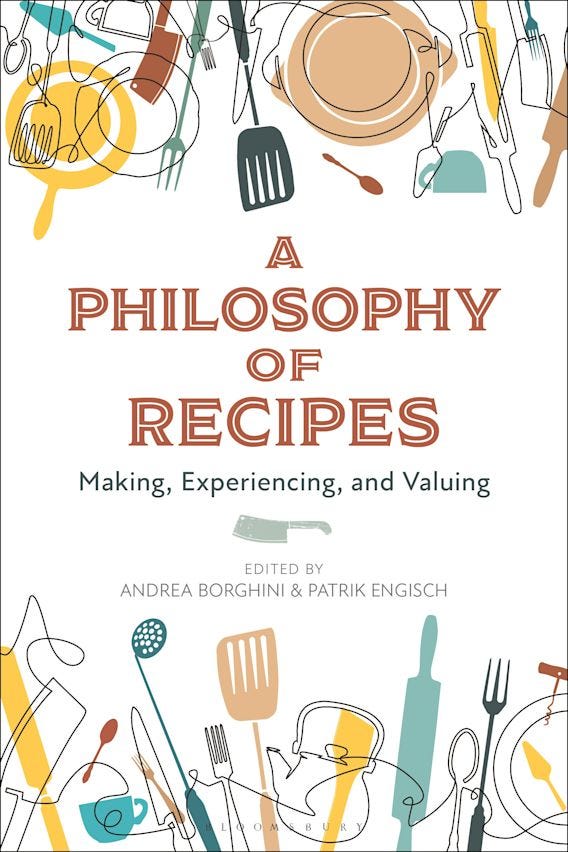

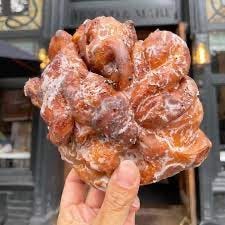


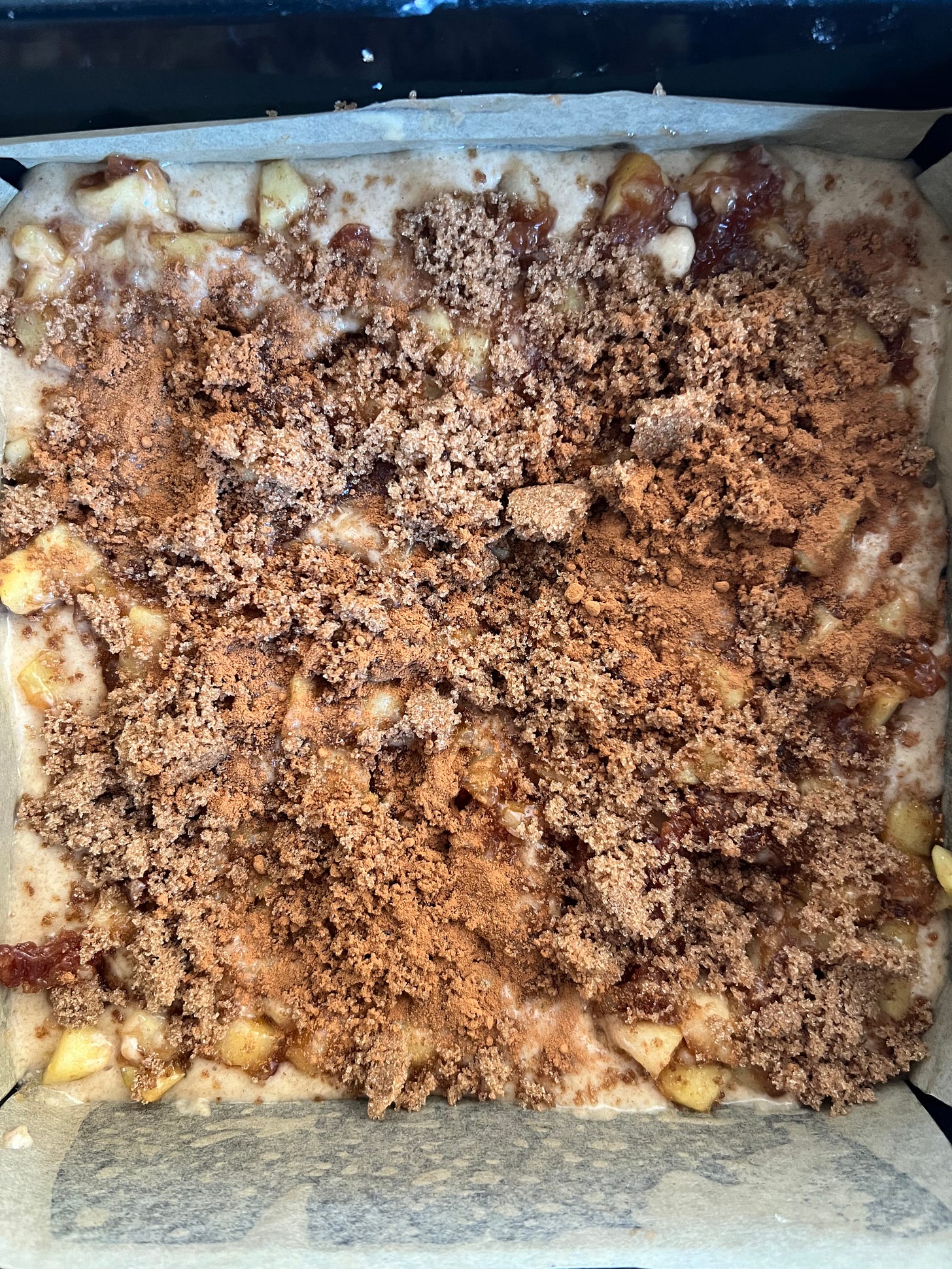
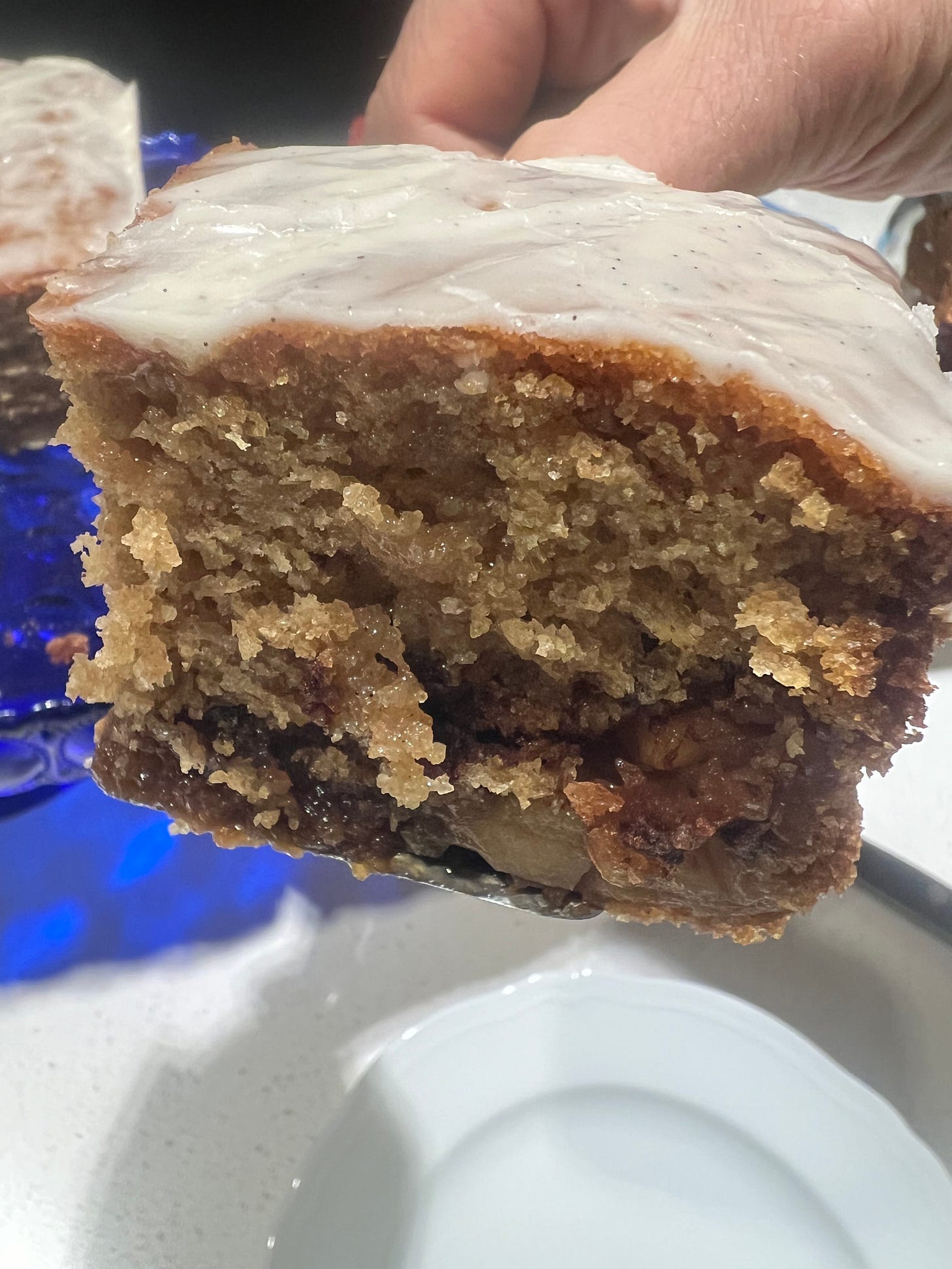
I saw that Apple fritter cake on Instagram and was suspicious. Thank you for confirming those suspicions, AND for actually testing it so it works. I’ll def be making this one!